Toraja Arabica earned its nickname as " The Queen of Coffee" for its balanced and pleasant flavor, body, and acidity. This nickname itself doesn't have a strong history surrounds it nor any solid information or origin. But Indonesian coffee reviewers and writers, mention that Toraja Arabica as " The Queen of coffee".
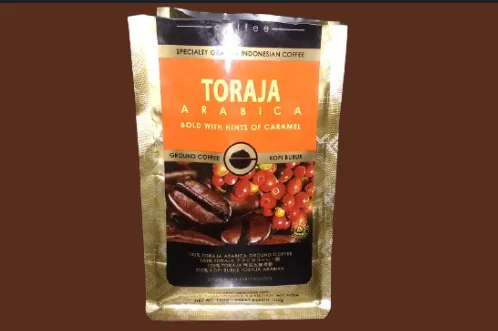
I spent the entire day searching " Why is that the case" but I found nothing other than it is due its pleasant mix of the flavor. Thus far, The closest explanation I can found is from this website A story behind Toraja Coffee. Though it was still not satisfying my curiosity.
The coffee from Toraja or well-known internationally as Celebes Coffee has a rich history behind it. The coffee in this region believed to be planted around 1850. And to this day, they still maintain a method called " Wet hulling" or in the local tongue, " giling basah".
The mature coffee fruit, referred to as the coffee cherry, is harvested. and farmers remove the outer skin mechanically using locally built pulping machines. The coffee beans, coated with mucilage, are stored for up to a day during which a natural fermentation breaks down the sticky residue. Afterwards the coffee beans, protected by a parchment hull (endocarp) are washed off before being let out to dry. source
In that wiki page, you can also read that that giling basah may reduce the acidity in the coffee and increasing its body. JJ Royal Company, an Indonesian coffee exporter specialized in speciality grade 1 coffee, made an amazing graphic that shows the differences between Indonesian Coffee Profile. Toraja Arabica listed as having low acidity, flavorful, with full-bodied. That matches the hypothesis about " Giling Basah" method.
Yesterday, I finished my Anjasmoro coffee which was high in acidity with hints of lime and brown sugar. I did not really like that variety as I think it was too acidic. So, when I was grocery shopping, I was weighing whether to try Aceh Gayo or Toraja Arabica. I was only looking at the flavor and since fruity coffee isn't for me, I decided to go with caramel or dark cocoa selection. So, that's how I picked this Toraja Arabica.
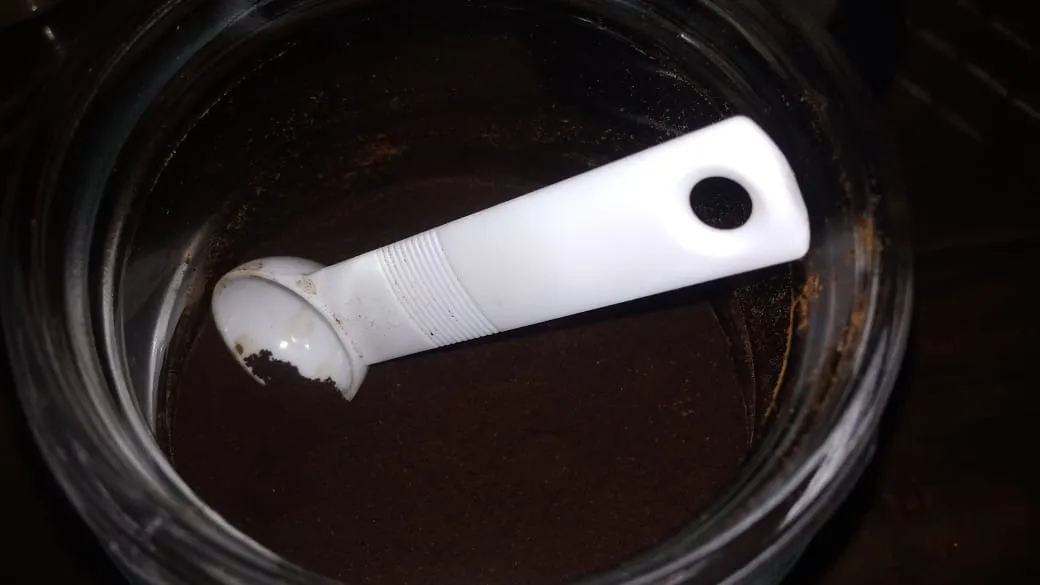
At first, I did not have any expectations towards this one. I barely see it at the coffee shop. Most coffee shops I visited either use Sumatra coffee or Java variety. Toraja variety is such a rarity that I could only find it at high-end cafe and coffee shop.
Another reason why I did not put any expectation is because the company. I was disappointed with Excelso, a brand name coffee that sells coffee ground and beans at supermarket. So, I generally don't trust a big retailer. I normally buy from a roastery that grinds the beans fresh. But I can say, my experience with JJ didn't disappoint me. It is a bit more in high end range than other brands but it's worth it.
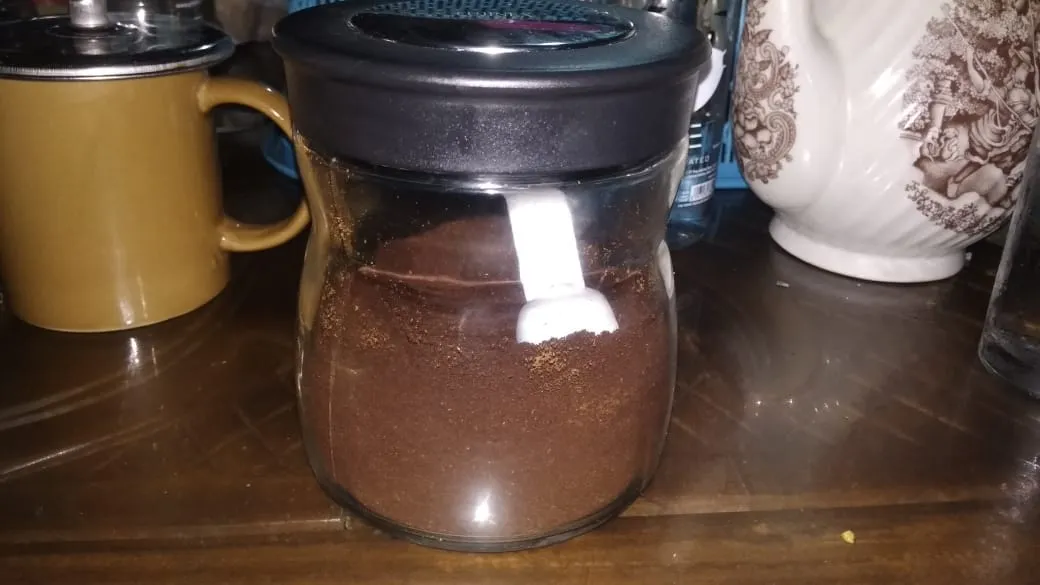
I mostly finish that much in about 3 or 4 weeks. It takes longer especially when it has higher acidity. With this Toraja Arabica, I can see it finished in just 2 weeks or maybe less. Sometimes, I also make Robusta since I always stock two varieties. So, that's how coffee in my house is a lot and why one variety won't finish that quickly.

As you can see above, I have that old vintage kettle. I don't have a goose neck kettle and a chemex that would be more ideal for dripping coffee tools. Maybe one day I am motivated enough to get them without feeling wasteful. But for that time, I use that vintage kettle + my measuring cup for coffee. As a note: it's important to use wooden instead of stainless steel spoon.
Now let's get into cupping !
We are going to use v60 dripping method to brew this variety. The first thing you have to do is pouring the coffee filter with water to remove the pappery taste. I tried not to water them down and it ended up tasting stale.
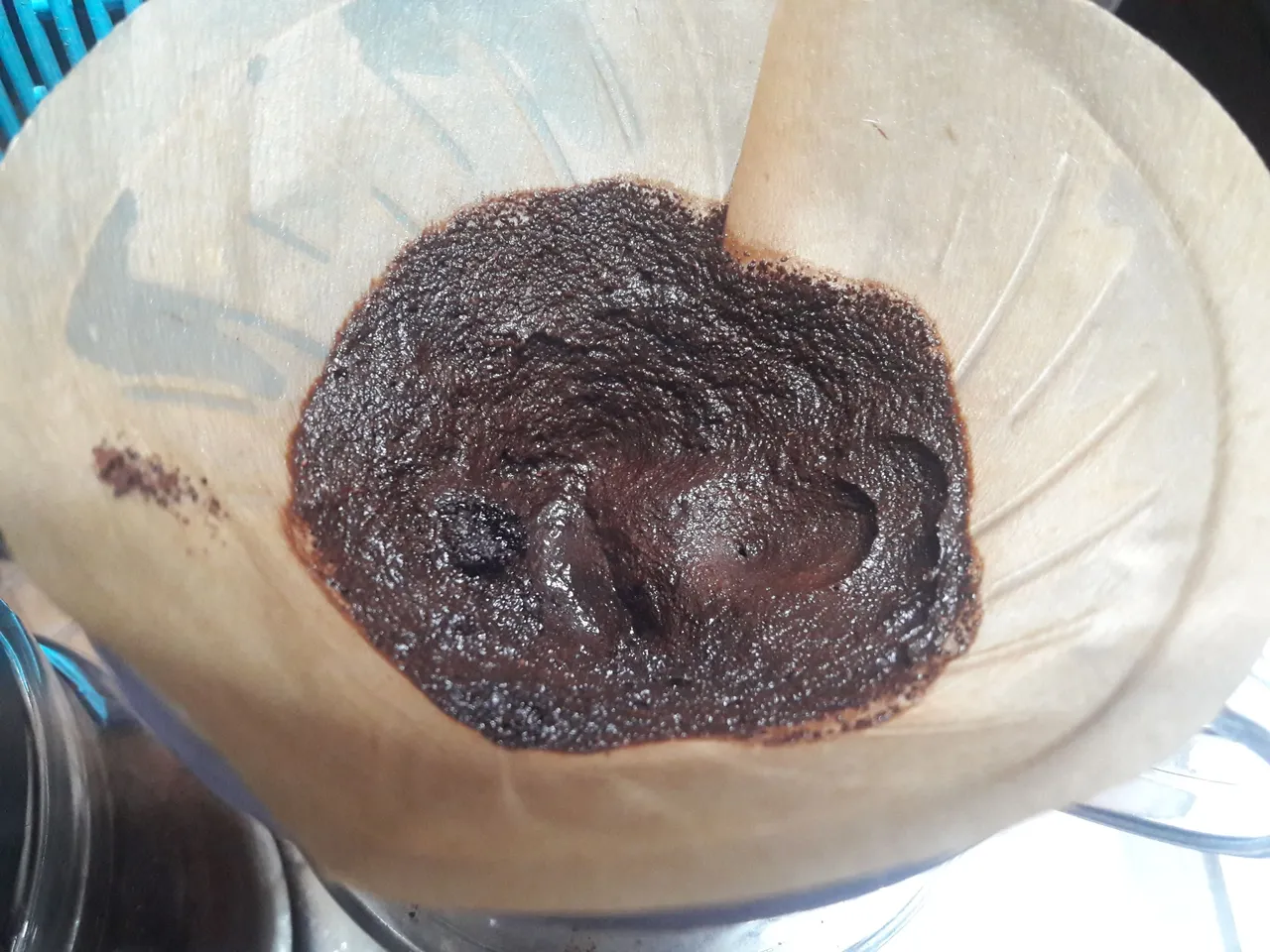
The second thing is put 4 teaspoon of coffee (in this case Toraja Arabica )or your preference. make a little crater. Then pour the water enough to cause a process called "blooming". Then add more water to it. I normally make 500ml to 600ml/day. If I didn't finish them at night, I freeze them and turn them into ice cubes coffee.
This extraction method is so fun. I always love watching the bubbles and waiting for the coffee to drip into the measuring cup. It's almost like a meditation.
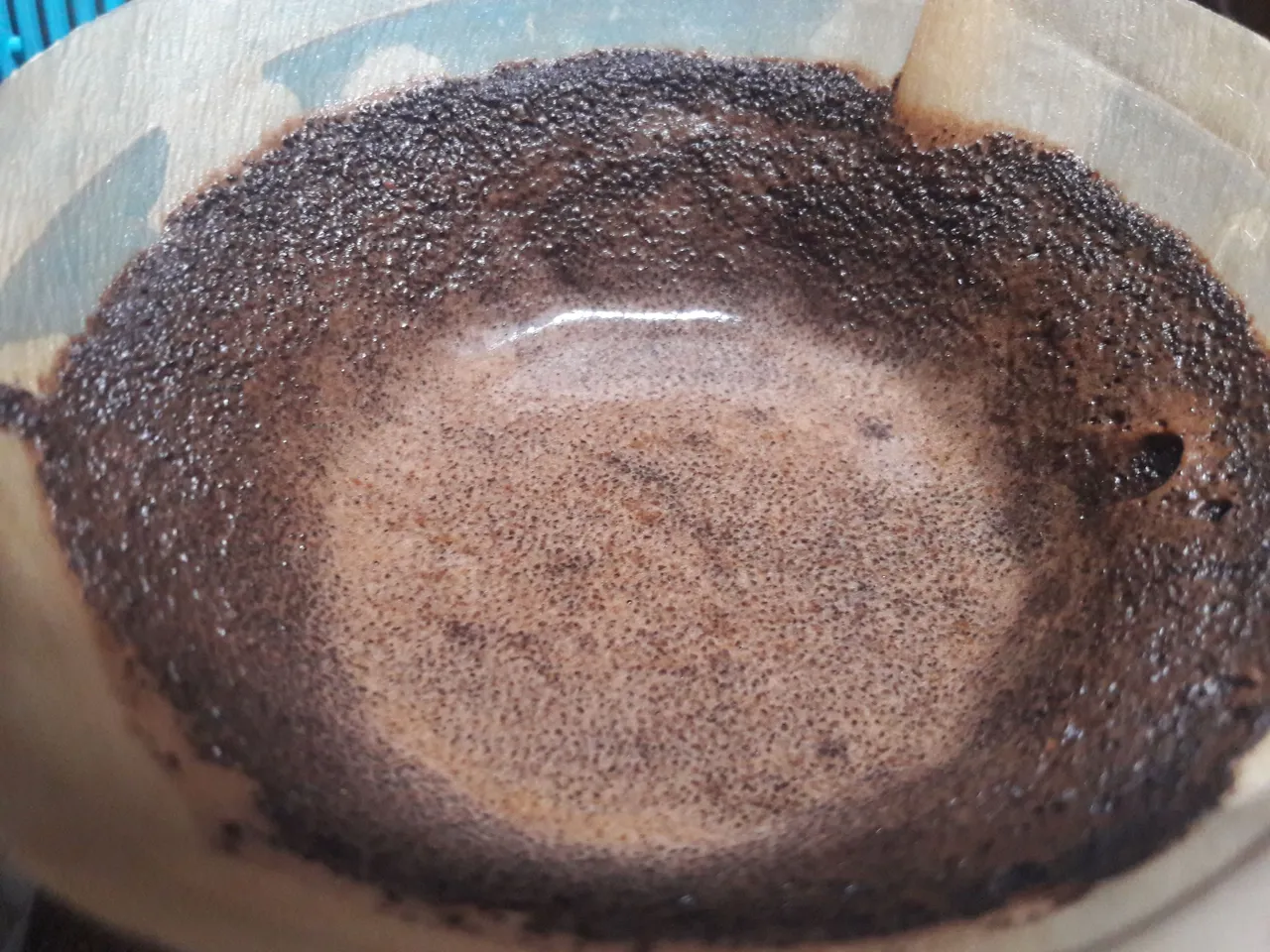
Though sometimes, I think this method is a bit time consuming. But I don't mind squeezing 20-30 minutes just to make a great cup of joe that'll accompany my day.

That is my newest mug collection. I really love the pattern and the color that matches my wood coaster. Also, it makes the coffee sort of dark with bitter taste perception. But the result of Toraja Arabica was so smooth, crispy, full-bodies and balanced. It was like being in a journey that I never want to end.
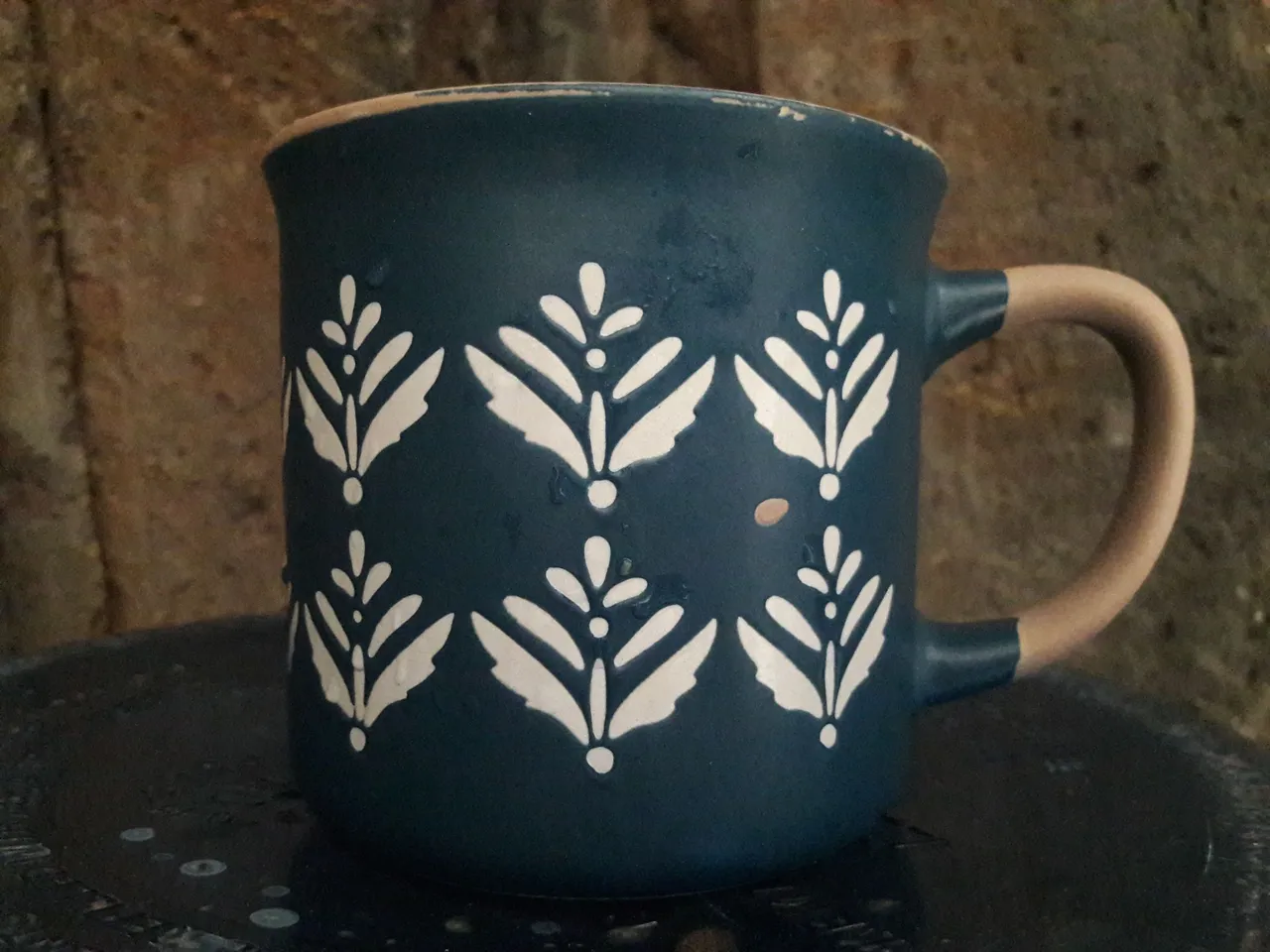
I could hardly taste the caramel but the dark cocoa was apparent.There's also hints of ripe fruit. This cup was also creamy and delightful. Everything was balanced compared to previous coffee I had that comes from Java and Sumatra which one of its flavor dominates and doesn't really complement each other. But with this cup, I really had a pleasant experience drinking Toraja Coffee. I think it's gonna be my most favorite Indonesian coffee variety.


